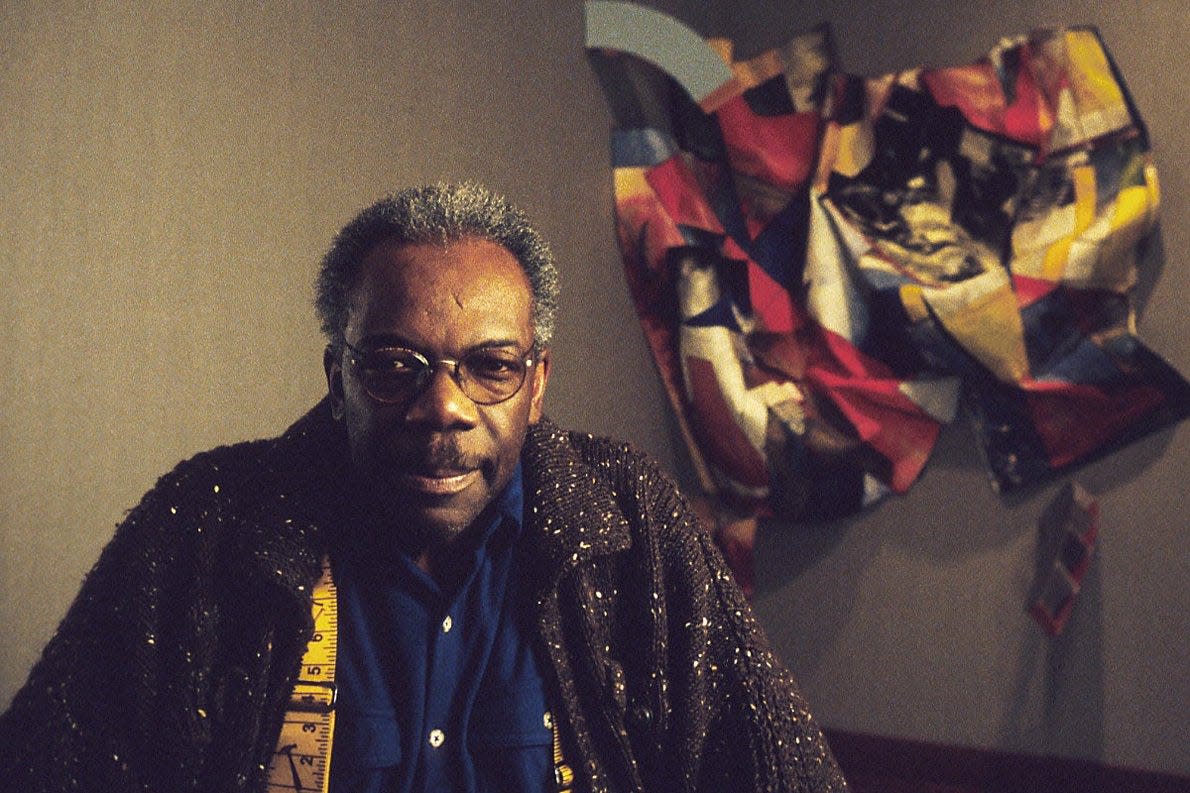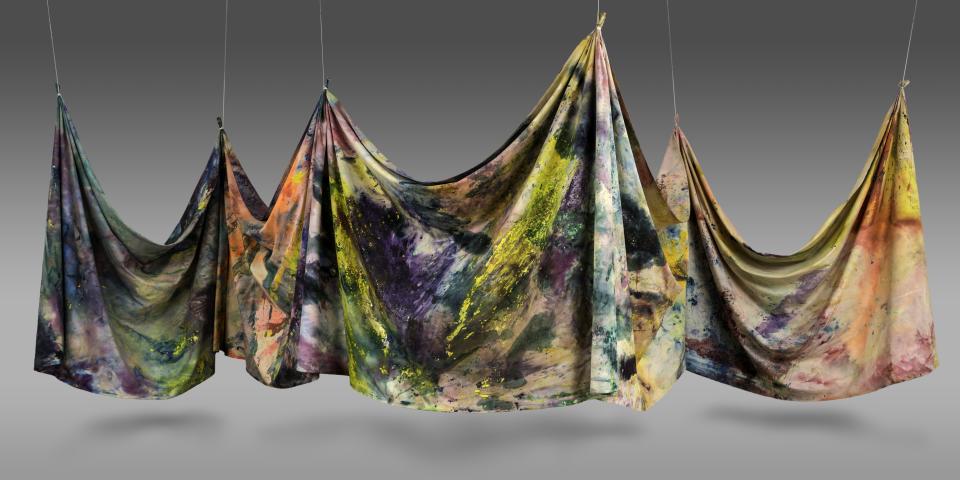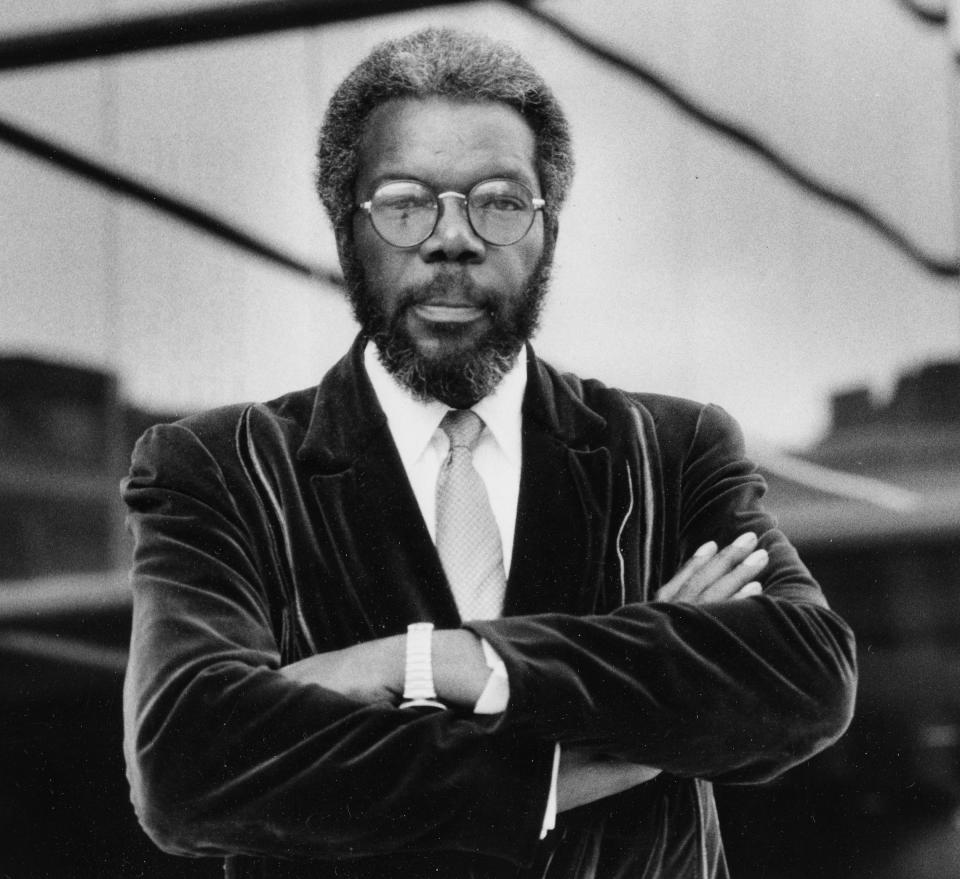Sam Gilliam, trailblazing abstract artist who grew up in Louisville, dies at 88

- Oops!Something went wrong.Please try again later.
Sam Gilliam, an abstract artist with deep ties to Louisville, died over the weekend.
A two-time University of Louisville alum whose transformative three-dimensional art drew international acclaim, Gilliam died Saturday at his home in Washington, D.C., due to renal failure, according to the New York Times. He was 88.
Gilliam lived in the nation's capital during the 1960s, working as a prominent Black artist during the Civil Rights movement, but a Courier Journal profile in 1982 noted "most of his formative years were spent around Greenwood Avenue in Louisville's west end." His works could be seen over the years in the nation's most prominent art galleries, and back home at the the Speed Art Museum, where director Raphaela Platow said he "left an immeasurable impact on the art scene in Louisville."
"His formative years as an artist were supported by the robust midcentury Black art scene in Louisville, Kentucky (known as the Louisville Renaissance) as well as through his studies at the University of Louisville's Hite Art Institute," Platow said.
Louisville art scene: A Van Gogh immersive exhibit is coming to Louisville this summer. Here's what to know
Gilliam was born in Tupelo, Mississippi, but moved to Louisville at a young age with his family. He earned a bachelor's degree for creative art from University of Louisville in 1955 and a master's degree in fine arts from the school in 1961 after graduating from Central High School alongside Robert Douglas, another U of L alum and art historian.
"He was an intense student, very intense about being an artist," Douglas said. The pair attended the university at the same time, and Douglas said Gilliam was instrumental in helping him get a scholarship that they shared.
During his time at the university, Gilliam "cofounded the Gallery Enterprises art collective," which gave "consistently supportive forum and network for artists of color to showcase their emerging talent," according to Platow.
Gallery Enterprises held meetings at a bar downtown on Chestnut Street to critique each others' work. Douglas also said the group held discussions about topics like art theory, philosophy, music and racism.
It was inevitable that Gilliam captured the imagination of the faculty at Louisville, Douglas said. He was unafraid to speak his mind in a time where it wasn't encouraged for Black folks to do so.
"We learned from each other to deal with the world because we dealt with each other very forcefully," Douglas said. "That's why Sam was able, Ken (Clay, a Louisville artist) was able to do what they did ... and that's why I was able to go and get a Ph.D."
Gilliam settled in Washington, D.C., in 1962, and by then, he had become an abstract expressionist who transformed the art scene by freeing his paintings from the confines of traditional canvas.
Noted for his drapery, Gilliam's artwork features "loose canvas stained with patterns of color achieved by pigments poured over before it is folded and restretched to give a symphonic resonance," said Platow. His Hall of Honor biography from the University of Louisville said his "painting as object" approach created a final product where "color is structured by the form of the canvas itself."

Defying gravity: How this aerialist is creating an inclusive fitness space in Louisville
Gilliam came into his career during the Vietnam War and Civil Rights movement, and the New York Times calls his work "especially daring" even for the time period, with an unpredictable and colorful visual style. And Gilliam said he wouldn't shy from making a statement.
“The expressive act of making a mark and hanging it in space is always political,” Gilliam said to José da Silva in The Art Newspaper in 2018, according to the New York Times. “My work is as political as it is formal.”
His work transformed over time, too. In the late 1970s, it nodded to traditional American painters like Jackson Pollock by attempting "expressive intensity of color," Platow said. And in the 1980s, "he pieced together shapes cut from large canvases strewn with paint to create vibrant crazy-quilt effects" and made three-dimensional creations that "meld painting with sculpture."

Gilliam's art has been shown internationally in prominent museums, including the Metropolitan Museum of Art in New York City, the National Gallery of Art in the nation's capital and, of course, Louisville's own Speed Museum, where Gilliam also served for a time on the museum's governing board.
While his art was popular in New York, Gilliam spent much of his adult life in Washington, D.C. – Platow noted he had seven one-man exhibitions at the city's presigious Jefferson Place Gallery between 1965 and 1973.
In the arts: Louisville poet pays homage to the 'Slack Tongue City' in debut poetry book
Gilliam is survived by wife, Annie Gawlak, three daughters from his first marriage to Dorothy Butler, three sisters and three grandchildren, according to the New York Times.
The artist was both kind and intense, Douglas said. Above all else, he was "dedicated, talented and an artistic genius."
Contact reporter Rae Johnson at RNJohnson@gannett.com. Follow them on Twitter at @RaeJ_33.
This article originally appeared on Louisville Courier Journal: Sam Gilliam, iconic and colorful abstract artist from Louisville, dies

